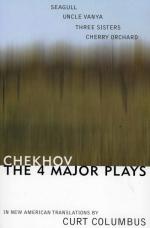|
This section contains 1,892 words (approx. 5 pages at 400 words per page) |

|
Fiero holds a Ph.D. degree. He formerly taught drama and playwriting at the University of Louisiana at Lafayette and is now a freelance writer and consultant. In the following essay, he examines the ways in which Chekhov employs structural elements and characterization to achieve a sense of uncompromising realism.
Among the early modern playwrights associated with the advent of realism in drama, none seems more wholly committed to its principal mimetic tenant—of depicting life as it actually appears —than does Anton Chekhov. The Seagull (1896) clearly illustrates this dedication, as do the rest of the dramatist's later works: Uncle Vanya (1898), The Cherry Orchard (1900), and Three Sisters (1901). In all of them, Chekhov's signature forte is his ability to reveal character depth while maintaining an almost clinical detachment from his subjects, something he first achieved in his fiction and then successfully carried into his drama.
There...
|
This section contains 1,892 words (approx. 5 pages at 400 words per page) |

|




